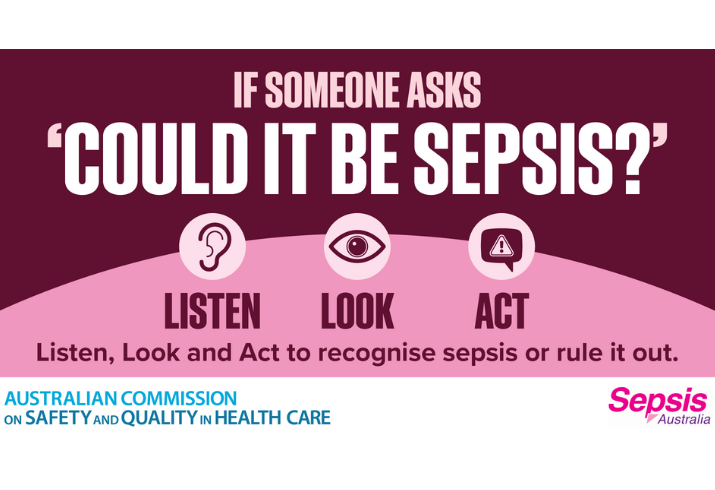Know the signs and symptoms of sepsis

This World Sepsis Day, WA Country Health Service wants people to be aware of the signs of sepsis.
Sepsis is the body’s life-threatening inflammatory response to an infection that can damage its own tissues and organs. Sepsis is a time-critical emergency that can lead to shock and potentially death if not recognised early and not treated quickly.
Sepsis is the leading cause of death from infection around the world and in Australia affects 55,000 people each year.
That’s why it’s important to know the symptoms that include:
- Rapid breathing
- Rapid heart rate
- Confusion, slurred speech, or disorientation
- Fever or shivering
- Muscle pain
- Not passing urine
- Discoloured skin.
Sepsis can progress more rapidly in young children and infants. It may not be a single symptom but a combination of changes in symptoms.
Anyone can develop sepsis, but children, infants, the elderly, and people with weakened immune systems are most vulnerable. People with chronic illnesses, such as diabetes, AIDS, cancer and kidney or liver disease are also at increased risk, as are those who have experienced a severe burn or physical trauma.
If you’re concerned about sepsis, contact Healthdirect or go to an emergency department.
Always call 000 in an emergency.
For more information visit: What is Sepsis? | Sepsis Australia (australiansepsisnetwork.net.au)

